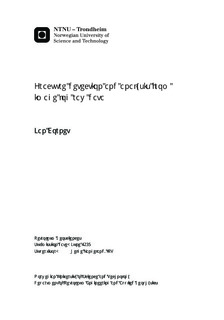Fracture detection and analysis from image log raw data
Master thesis
Permanent lenke
http://hdl.handle.net/11250/240034Utgivelsesdato
2013Metadata
Vis full innførselSamlinger
Sammendrag
This report presents the results obtained during the master thesis done at NTNU in the department of applied geophysics and is part of the: ?Quantitative geology from petrophysical measurment? project.The goal of this thesis was to develop a tool in Matlab to automatically interpret fractures on images logs. Since many fractures show as sinusoids on images logs this work focuses on detecting sinusoidal events in images. The programs were tested on resistivity and acoustic images provided respectively by Geostress and Statoil.Image processing is usually made of two main steps: edge detection and feature extraction. Two different kinds of edge mapping were tested on real data: gradient based and Fourier transform based. Finally the Fourier based edge mapping was kept because it could enhance the signal of fractures and reduce the impact of lithology. Some pre-processing steps like the interpolation of images had however to be added to enable the use of Fourier. In a second part of the thesis, three different feature extraction methods found in the literature where tested on synthetic data: the correlation method, the Hough transform and the Radon transform. The understanding of the limits of each of the three extraction methods tested previously led to the creation of an interpretation program of the ?edge-following? type that uses a partitioning algorithm. An ?edge-following? type was chosen for its ability to interpret fractures with imperfect sinusoidal shapes. The program was finally tested on electric and sonic image logs. The chances of properly interpreting a fracture on electric images were found to be of two over three and the processing speed of 200m/min.The tests on real data showed that the program has troubles interpreting low contrast or high dip fractures. There are also some issues when applied on images with break outs or wash outs. In a word, a fracture interpretation program was built using Matlab but it can still be improved.
